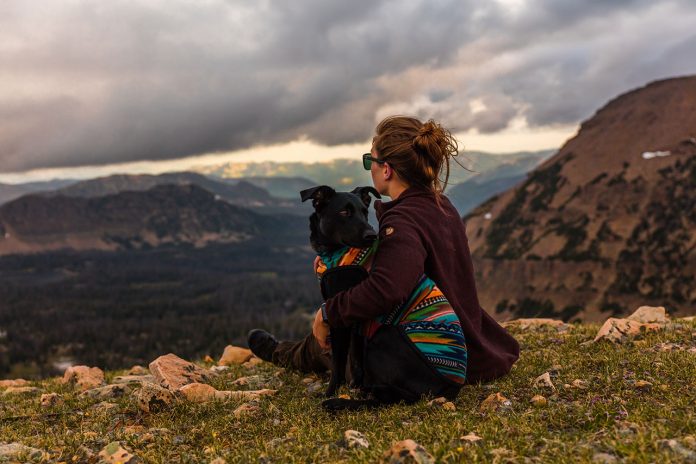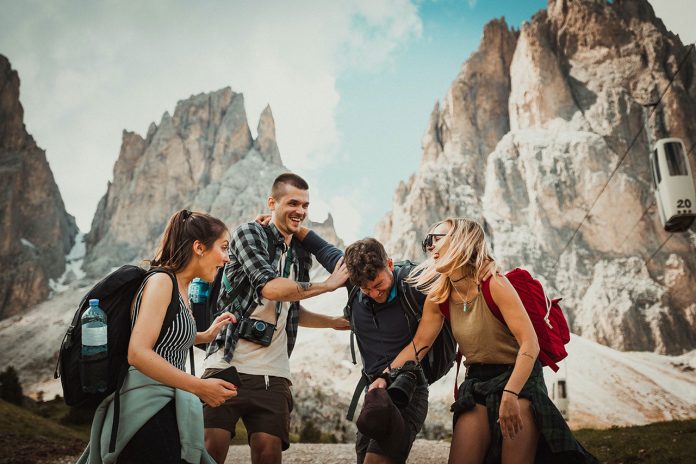For many hikers, hitting the trails just isn’t the same without their four-legged companion along for the adventure. Hiking with dogs allows both owner and pet to reap the mental and physical benefits of time outdoors together. However, keeping your pup safe, prepared, and well-behaved on the trail requires some additional planning and precautions. Use this guide to learn about ideal trails, necessary gear, training tips, safety essentials, and more for hiking with dogs.
Table of Contents
You may also want to know: How to start hiking
Choosing Dog-Friendly Trails
To make the hike pleasant for both of you, seek out these ideal trail characteristics:
- Pet-friendly regulations – Check rules to avoid issues with banned breeds, permits, or leash requirements.
- Moderate distances under 5 miles to start – Build up your dog’s conditioning and paw pad endurance.
- Gradual, consistent inclines – Steep or rocky terrain raises injury risk and difficulty.
- Available water sources – Rivers, lakes, even puddles…dogs love a dip!
- Minimal exposure – Dogs overheat more easily. Prioritize tree cover and elevation under 8,000 feet.
- Approachable bail-out points – Know where to shortcut back if your dog becomes distressed or exhausted.
If new to hiking with your dog, stick to beginner-friendly trails to build confidence.
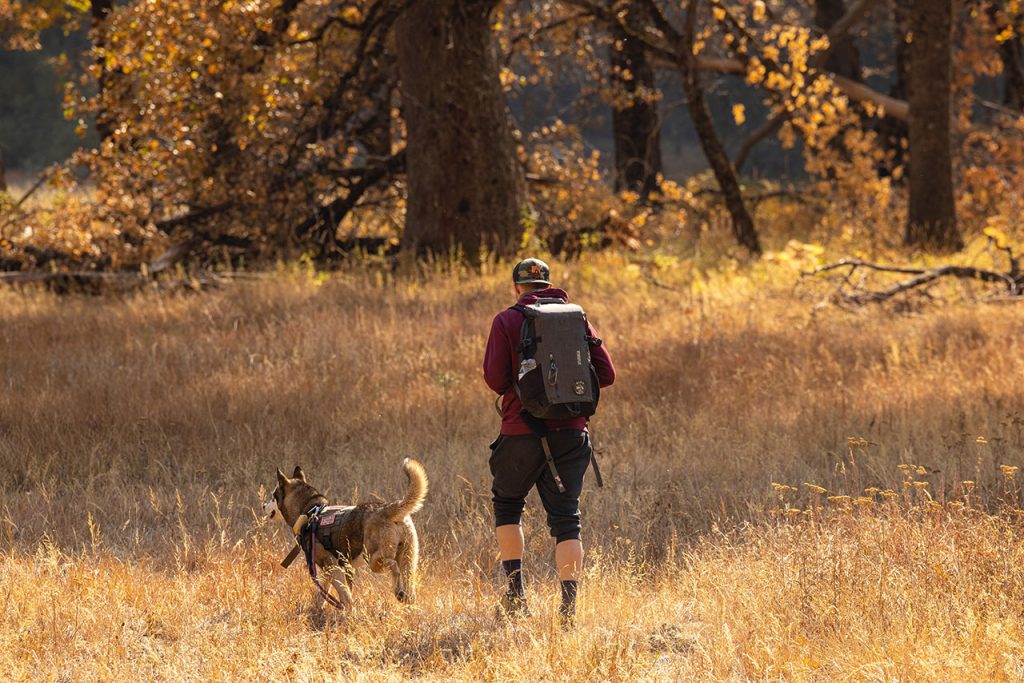
Must-Have Gear for Hiking With Dogs
Keep your dog comfy on the trail with:
- Collar or harness designed for hiking – Attach leash plus ID and trail permit tags.
- Leash appropriate for your dog’s size – Flexible for control yet able to extend on open areas.
- Paw protection – Booties shield paws from hot or rough terrain. Apply Musher’s wax to pads before hiking.
- Dog backpack – Let them carry their own food, water, waste bags, and bowl.
- Portable water bowl – Hydrating is crucial.
- First aid kit – Pads, bandages, tick remover, medication, antibiotic ointment.
- Dog backpack or sling carrier – For when they get tired or injured. Carry them out.
And don’t forget your own essentials like plastic bags, paper towels, hand sanitizer, and dog waste bags.
Mastering On-Trail Manners When Hiking With Dogs
Pre-hike obedience training ensures better trail behavior including:
- Sit/stay/come commands – For controlling them at trail junctions, during breaks, and around others.
- Ignoring distractions – Practice having them “leave it” when enticed by smells, critters, food debris, etc.
- Loose leash walking – Prevent pulling, wrapping the leash around you, or sudden responses to stimuli.
- Socialization – Get them comfortable around other hikers, dogs, horses, and wildlife.
Keep less-trained dogs leashed and don’t allow them to chase wildlife. Take a training treat pouch to incentivize good reactions. Verbal corrections and a short leash rein in misbehavior immediately to avoid it escalating.
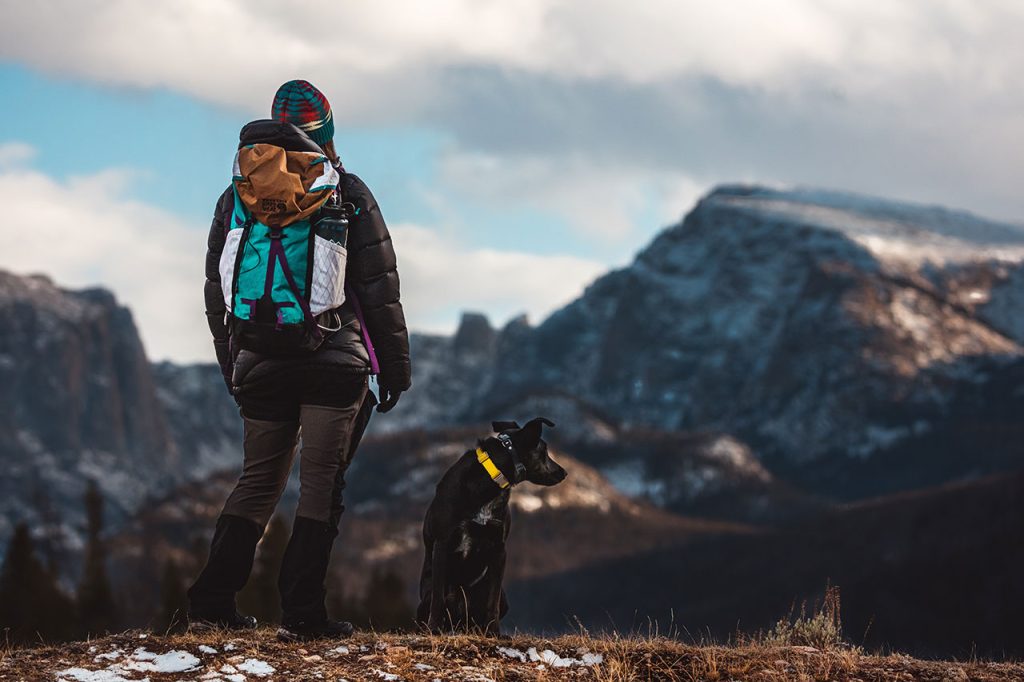
Campsite Etiquette for Hiking With Dogs
If overnight backpacking or camping, maintain their best behavior in camp by:
- Keeping them leashed and having them lay on a designated pad or sleeping bag.
- Clearly marking their bowls, toys, tie-outs, and other gear so it’s not disturbed.
- Following any camp rules regarding feeding times or designated relief areas.
- Picking up and disposing of all waste properly. Take plenty of bags.
- Keeping them from excessive barking, begging from others, or hovering for dropped food.
Set camp expectations early on arrival when they’re most excited.
Key Safety Considerations When Hiking With Dogs
Watch for these hiking hazards to dogs:
- Overheating – Bring collapsible bowls and water. Know the signs of heat stroke.
- Dehydration – Bring electrolytes. Dogs need replenishment too.
- Overexertion – Take breaks and shorten distance if limping or lagging.
- Paw injury – Booties protect from hot or rough terrain. Inspect paws regularly.
- Porcupine encounters – Avoid if possible. Be prepared to remove quills.
- Falls – Use a harness and leash to prevent them from pulling ahead into danger.
- Wildlife conflicts – Leash control prevents dangerous interactions with bears, moose, and other wildlife.
Monitor closely and always turn back if conditions seem too much for your dog’s limits that day.
Rewarding Your Trail Companion
Finish each hike on a high note by:
- Offering treats and lots of praise throughout the hike for good behavior.
- Take a fun side trip to a dog-friendly restaurant patio, brewery, or store.
- Have hungry dogs? Ending at a tasty human-and-dog-approved eatery!
- Checking for ticks, injuries, or limping and addressing any issues.
- Giving soothing massages and extra playtime at home to loosen muscles.
Hiking together strengthens your bond while tiring you both out for a sound sleep. Starting on easy trails, using proper gear, emphasizing training, and keeping safety top of mind leads to great experiences for you and your loyal trail buddy.
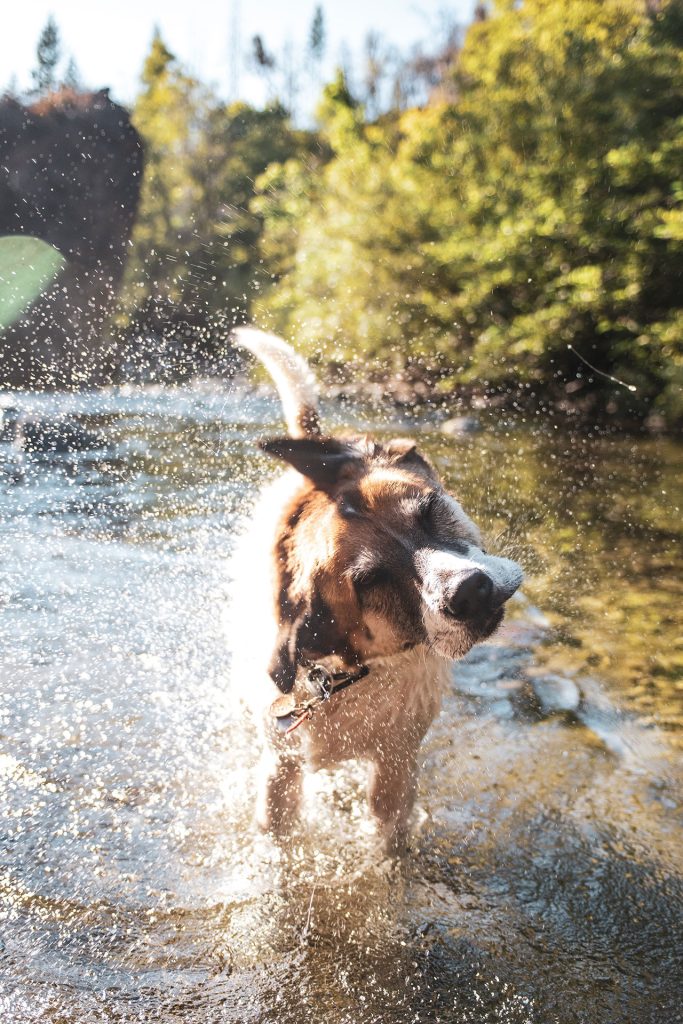
Related Links:
https://en.wikipedia.org/wiki/Hiking


